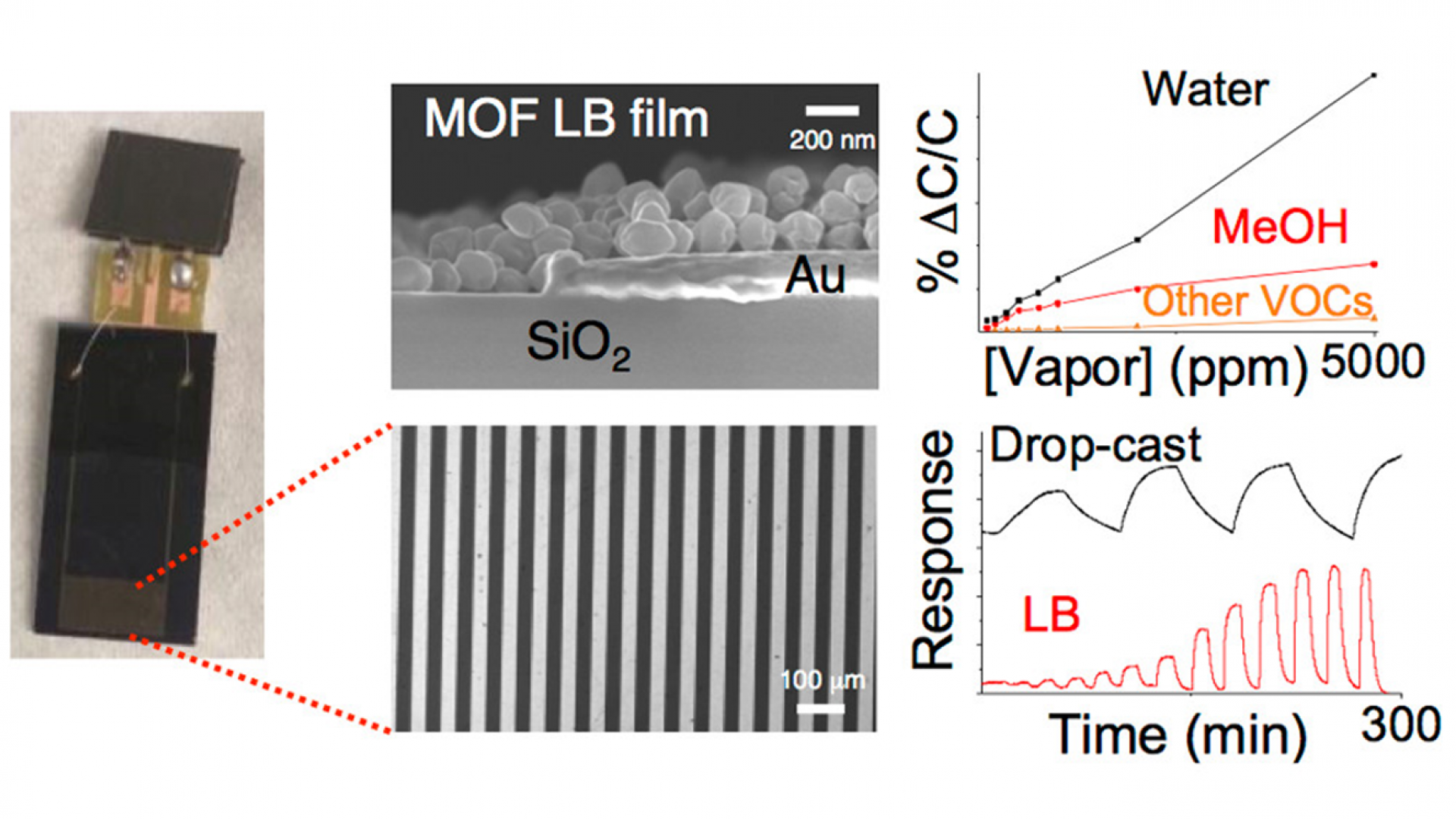Miguel Andrés, et al., "Methanol and Humidity Capacitive Sensors Based on Thin Films of MOF Nanoparticles." ACS Applied Materials & Interfaces 12 (3) ,2020, 4155.
The successful development of modern gas sensing technologies requires high sensitivity and selectivity coupled to cost effectiveness, which implies the necessity to miniaturize devices while reducing the amount of sensing material. The appealing alternative of integrating nanoparticles of a porous metal–organic framework (MOF) onto capacitive sensors based on interdigitated electrode (IDE) chips is presented. We report the deposition of MIL-96(Al) MOF thin films via the Langmuir–Blodgett (LB) method on the IDE chips, which allowed the study of their gas/vapor sensing properties. First, sorption studies of several organic vapors like methanol, toluene, chloroform, etc. were conducted on bulk MOF. The sorption data revealed that MIL-96(Al) presents high affinity toward water and methanol. Later on, ordered LB monolayer films of MIL-96(Al) particles of ∼200 nm were successfully deposited onto IDE chips with homogeneous coverage of the surface in comparison to conventional thin film fabrication techniques such as drop-casting. The sensing tests showed that MOF LB films were selective for water and methanol, and short response/recovery times were achieved. Finally, chemical vapor deposition (CVD) of a porous thin film of Parylene C (thickness ∼250–300 nm) was performed on top of the MOF LB films to fabricate a thin selective layer. The sensing results showed an increase in the water selectivity and sensitivity, while those of methanol showed a huge decrease. These results prove the feasibility of the LB technique for the fabrication of ordered MOF thin films onto IDE chips using very small MOF quantities.
